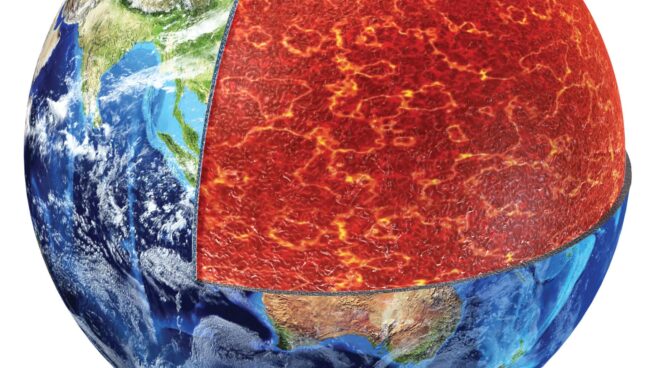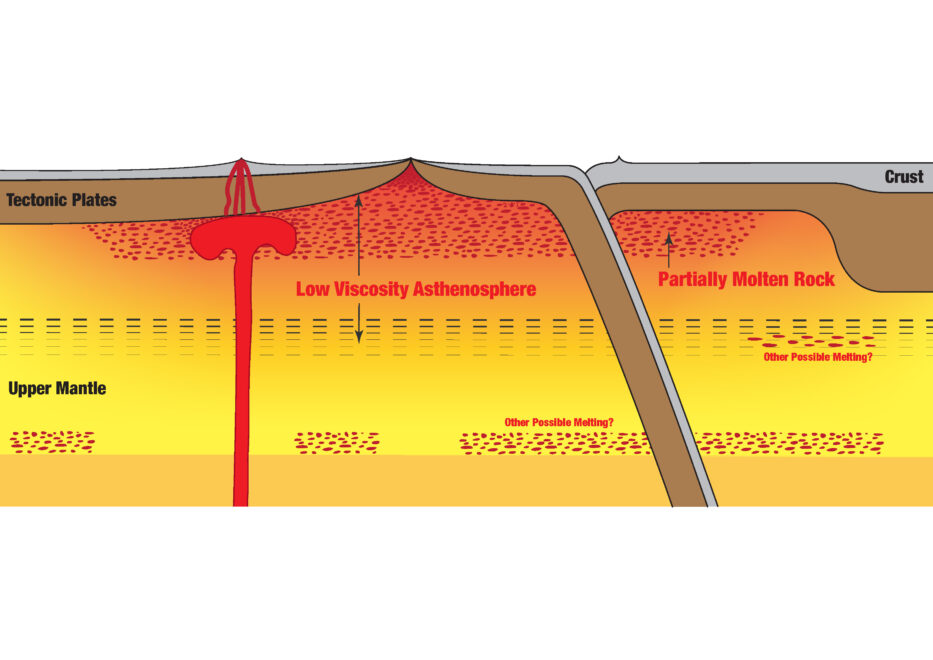

Section of the Earth’s upper mantle.
Researchers at the University of Texas at Austin are uncovering for the first time the global extent of a molten rock layer and its role in plate tectonics, detailing it in a study published in the journal. natural science .
The molten layer is about 100 miles below the surface and is part of the asthenosphere that lies beneath the Earth’s tectonic plates in the upper mantle. The asthenosphere is important to plate tectonics because it forms a relatively smooth boundary that allows tectonic plates to move through the mantle.
However, the reasons for its softness are not fully understood. Scientists previously thought molten rock might be the cause. But this study shows that melting does not actually have a measurable effect on the flow of mantle rocks.
“When we think about something melting, we intuitively think that melting must play an important role in the viscosity of the material,” says Junlin Hua, a research fellow at the Jackson School of Earth Sciences at the University of Texas, who led the study. “But we found that even when the proportion of melt is quite high, its effect on mantle flow is very small,” he adds.

According to the study, heat and rock convection in the mantle dominates plate movement. Although the interior of the Earth is mostly solid, over long periods of time the rocks can move and flow like honey. Demonstrating that the melt layer does not affect plate tectonics means a less complex variable for computer models of the Earth, according to co-author Torsten Becker, a professor at the Jackson School.
“We can’t rule out that local melting doesn’t matter,” said Becker, who develops geodynamic models of the Earth at IUniversity of Texas Institute of Geophysics Jackson School. “But I think it encourages us to see these melting observations as a marker of what’s going on on Earth, and not necessarily an active contribution to anything.”
Turkish idea
The idea to search for a new layer in the interior of the Earth came to Hua while studying seismic images of the mantle under Turkey during his doctoral research. Chance wanted his research to be published on the same day that two earthquakes devastated southern Turkey and northern Syria.
“This work is important because understanding the properties of the asthenosphere and the reasons for its weakness is critical to understanding plate tectonics,” the co-author said. Karen Fisherseismologist and professor at Brown University.
Intrigued by the signs of partially molten rock beneath the Earth’s crust, Hua collected similar images from other seismic stations until he had a global map of the asthenosphere. What he and others took to be an anomaly was in fact a common occurrence throughout the world, showing up in seismic readings where the asthenosphere was hottest.
The next surprise came when he compared his melt map with seismic measurements of tectonic movement and found no correlation, despite the fact that the melt layer covered almost half of the Earth.
Source: El Independiente